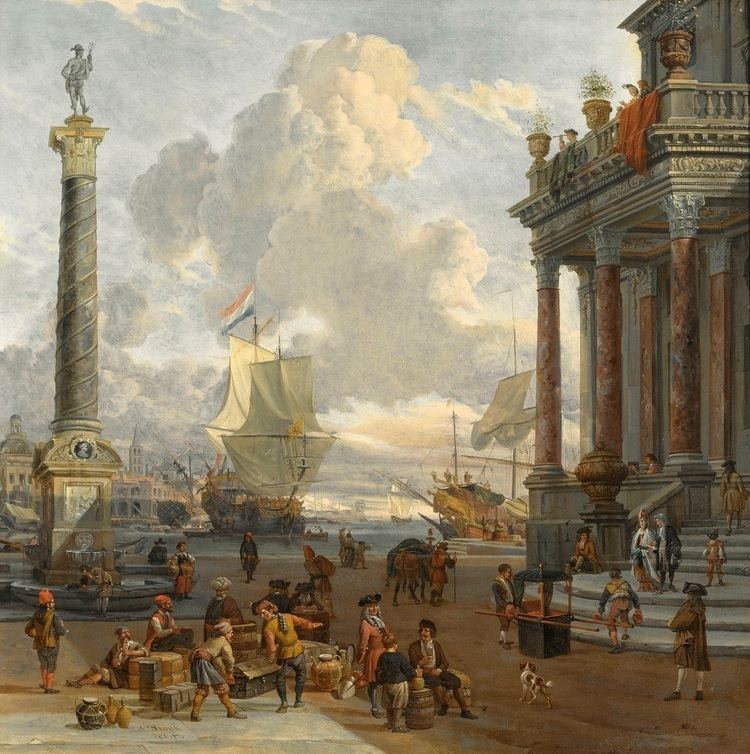 | ||
A trade bloc is a type of intergovernmental agreement, often part of a regional intergovernmental organization, where regional barriers to trade, (tariffs and non-tariff barriers) are reduced or eliminated among the participating states.
Contents
Description
Historic economic blocs include the Hanseatic League, a trading alliance in northern Europe in existence between the 12th and 17th centuries and the German Customs Union (Zollverein) initiated in 1835, formed on the basis of the German Confederation and subsequently German Empire from 1871. Surges of trade bloc formation were seen in the 1960s and 1970s, as well as in the 1990s after the collapse of Communism. By 1997, more than 50% of all world commerce was conducted within regional trade blocs.
Economist Jeffrey J. Scott of the Peterson Institute for International Economics notes that members of successful trade blocs usually share four common traits: similar levels of per capita GNP, geographic proximity, similar or compatible trading regimes, and political commitment to regional organization.
Advocates of worldwide free trade are generally opposed to trading blocs, which, they argue, encourage regional as opposed to global free trade. Whereas other economists believe that free trade is in the interest of every country, because it would create more feasible opportunities by turning indigenous resources into goods and services that are both currently in demand and will be in demand in the future by consumers. Scholars and economists continue to debate whether regional trade blocs are leading to a more fragmented world economy or encouraging the extension of the existing global multilateral trading system.
Trade blocs can be stand-alone agreements between several states (such as the North American Free Trade Agreement (NAFTA)) or part of a regional organization (such as the European Union). Depending on the level of economic integration, trade blocs can fall into different categories, such as: preferential trading areas, free trade areas, customs unions, common markets and economic and monetary unions.
Advantages
There are five major advantages of trade bloc agreements: foreign direct investment, economies of scale, competition, trade effects, and market efficiency.
Foreign Direct Investment: An increase in foreign direct investment results from trade blocs and benefits the economies of participating nations. Larger markets are created, resulting in lower costs to manufacture products locally.
Economies of Scale: The larger markets created via trading blocs permit economies of scale. The average cost of production is decreased because mass production is allowed.
Competition: Trade blocs bring manufacturers in numerous countries closer together, resulting in greater competition. Accordingly, the increased competition promotes greater efficiency within firms.
Trade Effects Trade blocs eliminate tariffs, thus driving the cost of imports down. As a result, demand changes and consumers make purchases based on the lowest prices, allowing firms with a competitive advantage in production to thrive.
Market Efficiency: The increased consumption experienced with changes in demand combines with a greater amount of products being manufactured to result in an efficient market.
Disadvantages
The disadvantages, on the other hand, include: regionalism vs. multinationalism, loss of sovereignty, concessions, and interdependence.
Regionalism vs. Multinationalism: Trading blocs bear an inherent bias in favor of their participating countries. For example, NAFTA, a free trade agreement between the United States, Canada and Mexico, has contributed to an increased flow of trade among these three countries. Trade among NAFTA partners has risen to more than 80 percent of Mexican and Canadian trade and more than a third of U.S. trade, according to a 2009 report by the Council on Foreign Relations. However, regional economies establish tariffs and quotas that protect intra-regional trade from outside forces, according to the University of California Atlas of Global Inequality. Rather than pursuing a global trading regime within the World Trade Organization, which includes the majority of the world's countries, regional trade bloc countries contribute to regionalism rather than global integration.
Loss of Sovereignty: A trading bloc, particularly when it is coupled with a political union, is likely to lead to at least partial loss of sovereignty for its participants. For example, the European Union, started as a trading bloc in 1957 by the Treaty of Rome, has transformed itself into a far-reaching political organization that deals not only with trade matters, but also with human rights, consumer protection, greenhouse gas emissions and other issues only marginally related.
Concessions: No country wants to let foreign firms gain domestic market share at the expense of local companies without getting something in return. Any country that wants to join a trading bloc must be prepared to make concessions. For example, in trading blocs that involve developed and developing countries, such as bilateral agreements between the U.S. or the EU and relatively poor Asian, Latin American or African countries, the latter may have to allow multinational corporations to enter their home markets, making some local firms uncompetitive.
Interdependence: Because trading blocs increase trade among participating countries, the countries become increasingly dependent on each other. A disruption of trade within a trading bloc as a result of a natural disaster, conflict or revolution may have severe consequences for the economies of all participating countries.
Lists of trade blocs
Statistics
This list is based on the data obtained from United Nations Statistics Division.This list is based on the data obtained from United Nations Statistics Division.
